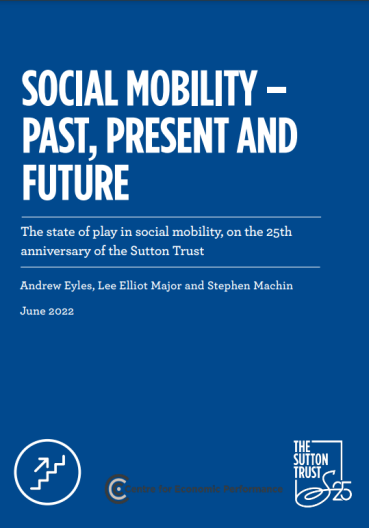Report Overview
The study of social mobility can be traced back around 100 years, but up until the turn of the millennium it remained largely an academic topic. While a few seminal papers on income mobility had been published in the 1990s, the Sutton Trust’s 2005 report, ‘Intergenerational Mobility in Europe and North America’ signalled a new wave of social mobility studies that have proliferated over the last two decades.
To mark the Sutton Trust’s 25th anniversary, this report examines the latest developments in social mobility research since the landmark 2005 report, as well as how the field has changed and developed over the last 25 years. Authored by Andrew Eyles, Lee Elliot Major and Stephen Machin from the Centre for Economic Performance and the University of Exeter, it also looks at new and updated estimates of mobility patterns and future trends in the UK.
